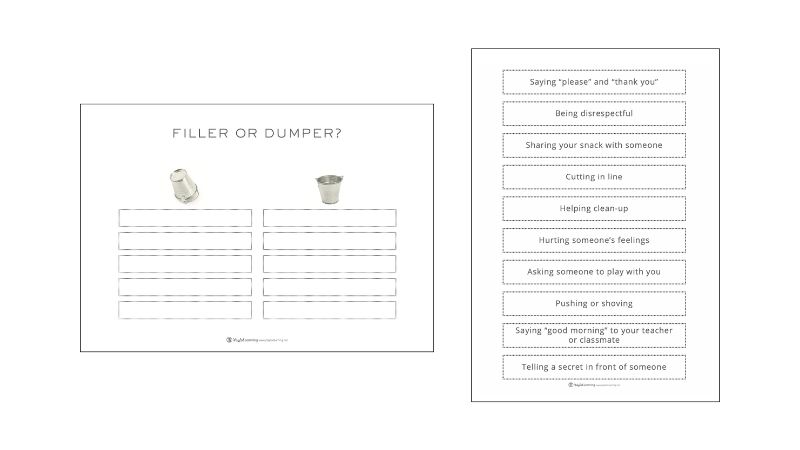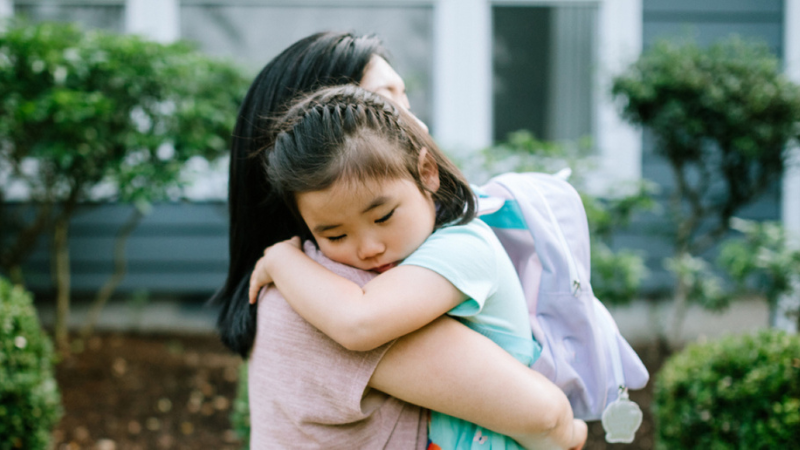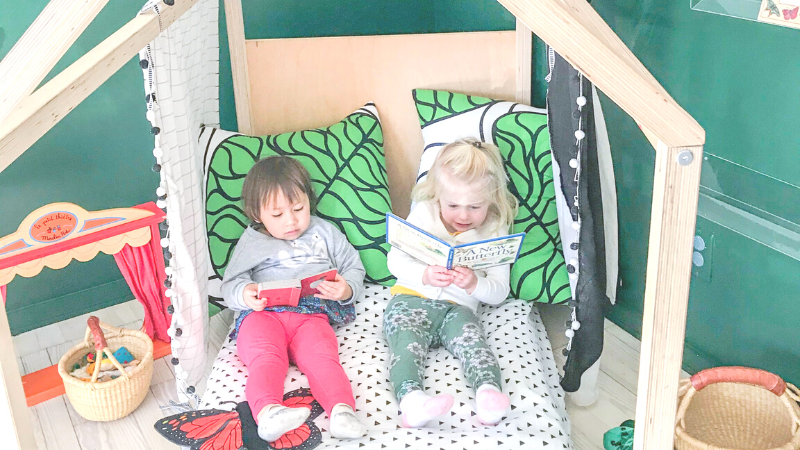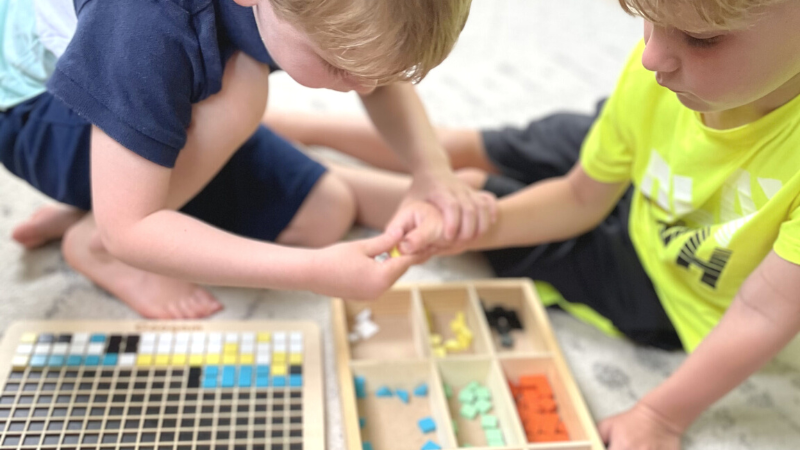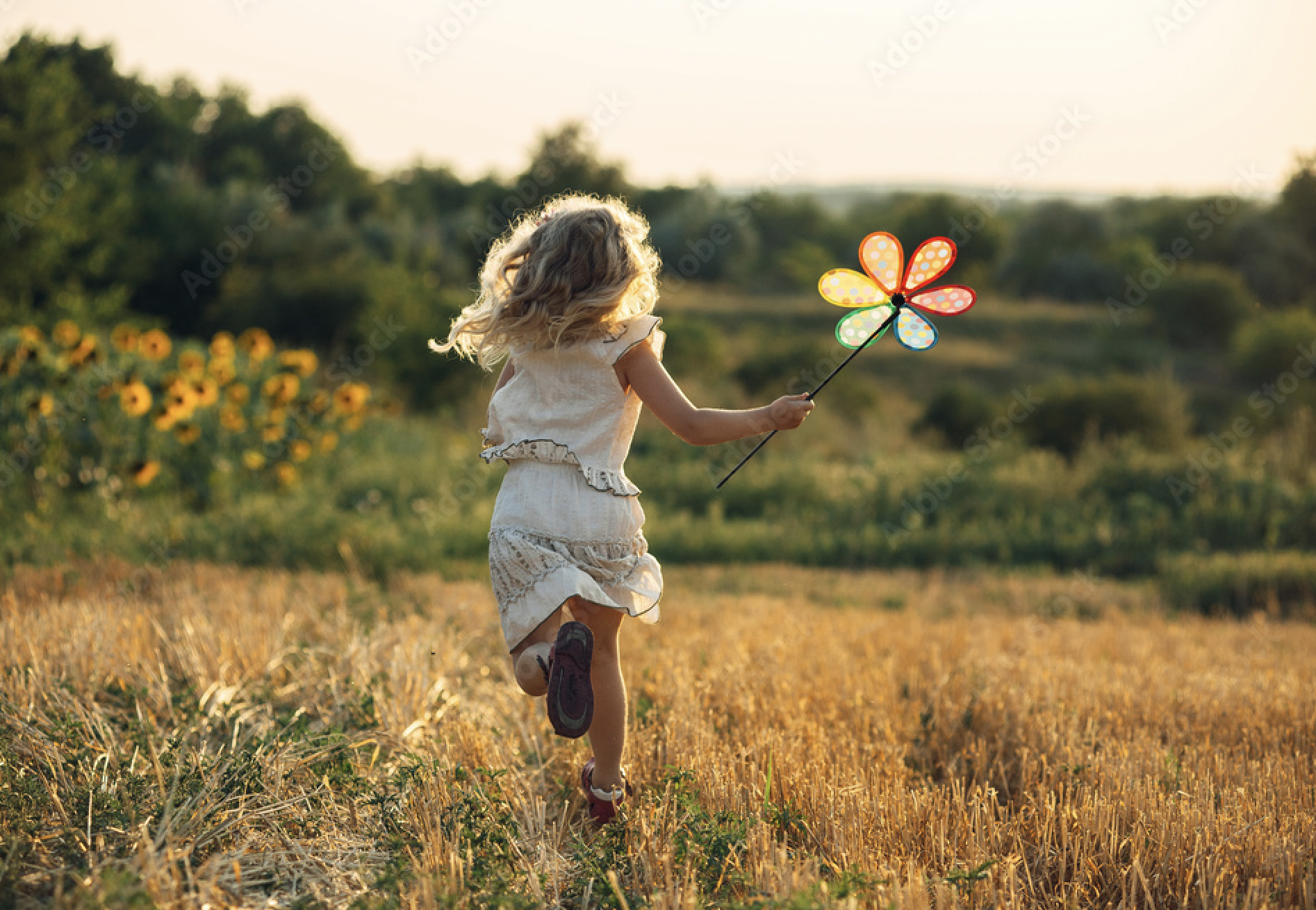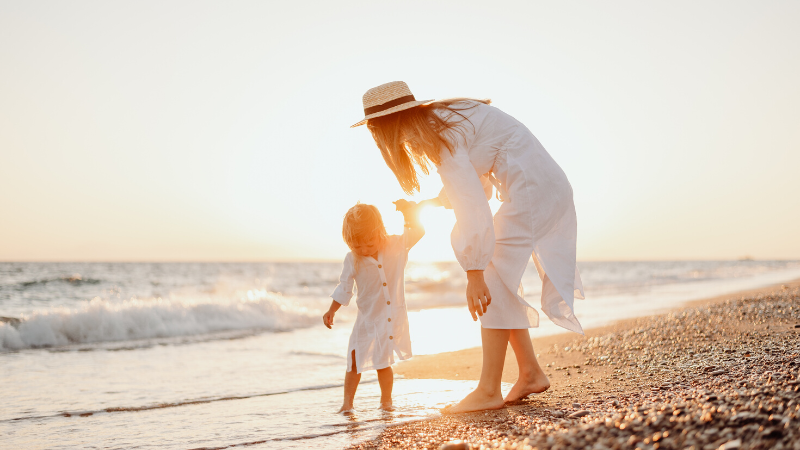Transitioning back to school, after months of togetherness and being at home, can be both an exciting and anxious time for young children and their grown ups!
But we have a few tips to help you with the process:
1. Role Play + Practice
Model school procedures and routines through role play. Sneak in some important life skills without your child suspecting a thing! Play school and model how to sit “criss-cross applesauce,” take turns listening and speaking, practice raising a hand to share ideas, and set an example by saying please and thank you.
Encourage independence. Teach your child how to put on and take off their backpack, zip and unzip their coat, hang things up on a hook, and wash and dry their hands properly. The more they practice these skills at home the better equipped they’ll be for school (and your child’s teacher will thank you)!
2. Read, Read, Read
Reading books about school* will absolutely help ease your child’s worry. Choose books with common “back to school” themes like:
- Facing fears
- Navigating big emotions
- Trying something new
- Being a good friend
Spend time talking about how the characters in these stories are feeling and see if your child feels the same way. Share how you’ve felt when you’ve had to start something new or meet new people for the first time. Reassure your child, validate their feelings, and answer their questions. And remind them that school is a place to make new friends, learn, and have fun!
*We are an Amazon affiliate and earn from qualifying purchases.
3. Be a Bucket Filler
Teach children the concept of bucket filling which puts kindness, empathy, and compassion for others at the forefront of a back to school transition. The idea is simple: when we receive a compliment, a smile, or help from someone, our bucket is being filled; this makes us feel loved and happy! But when someone is unkind to us or hurts our feelings, our bucket is being emptied; this makes us feel sad, lonely, and left out. This is a great way to discuss what it means to be a friend and practice habits that will help children make new friends at school! Print out our Be a Bucket Filler printable and sort each scenario by whether it would fill your bucket or empty it.
4. For the Grown Ups: Dealing with Separation Anxiety
During the beginning days of school, teachers and parents have a similar goal: to support a child’s healthy transition to a school-like environment and help them become comfortable with classroom routines. Often times, this is easier said than done; but we have a few tips to help your child (and you) get ahead of separation anxiety.
Set clear expectations. Explain to your child exactly what will happen every day at drop off. Be specific and tell them when you will say goodbye (in the car, at the door), where you will be while they are in school (at home, getting groceries), and when you will return (when the school day is done and the little hand is on the 11). Set these expectations early and repeat them often.
Create a goodbye routine. Develop a routine, with your child, for saying goodbye. For example, “I will give you two kisses and two hugs, and then I will say goodbye.” Do this every time you drop off. And don’t try and sneak away from your child without saying goodbye. Always tell your child when you’re leaving, and then follow through … even if your child is upset and it feels difficult to walk away!
Have the same person drop off and/or pick up each day. Being consistent in who drops off your child and who picks them up is important. This not only supports your child’s daily routine, but it leaves no surprises. If there comes a time when a different person drops off your child, make sure a goodbye routine is in place and the expectations stay the same.
Visit the classroom space if possible. If you’re able to visit the space before school starts, take a few pictures of your child having fun in their new classroom. Snap a photo of your child with a new classroom toy, a fun game, or a special person (teacher/friend). Then share the pictures with your child and remind them how much fun they’re going to have at school this year! For example, “You get to go to school today and play with the blocks again! I bet you can make another tower with your new friend.”
To get an inside look at the tips we share with our own parents in the Playful Learning Studio, click the link below to see our Guide to Separation.
Just remember, when it comes to transitions stay positive. The more positive you are about your child going back to school, the more positive and excited they will be. You’ve got this!
